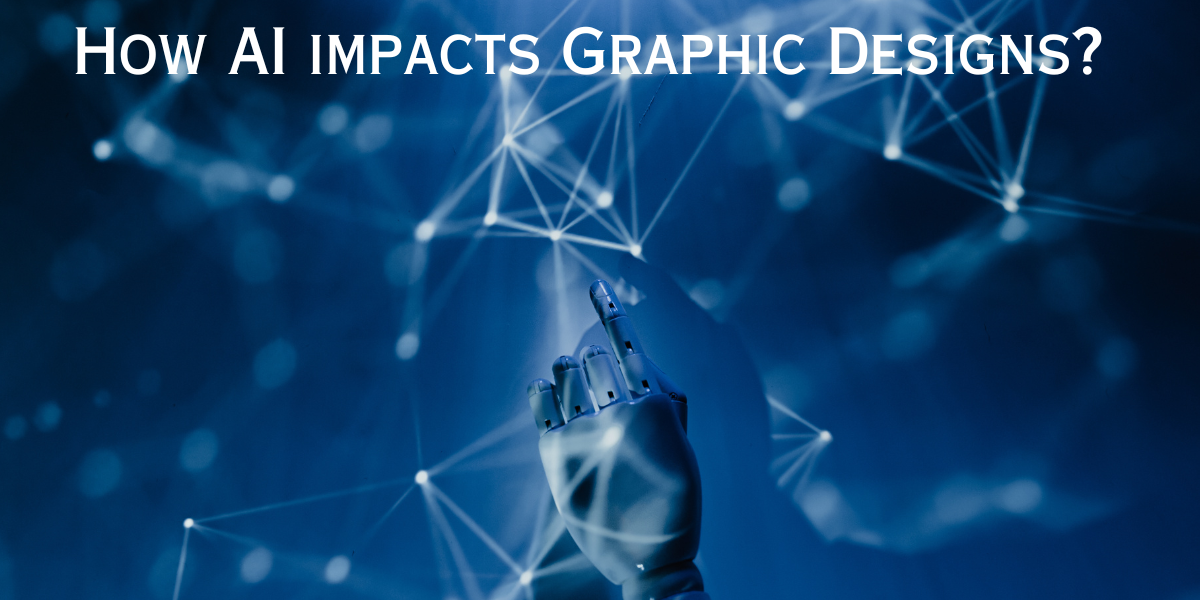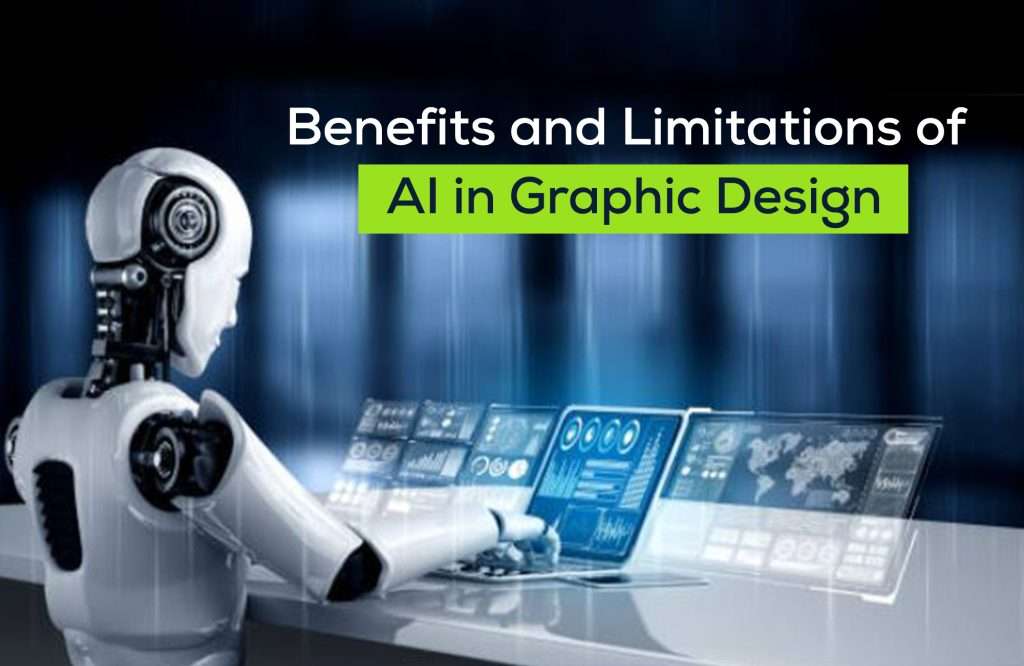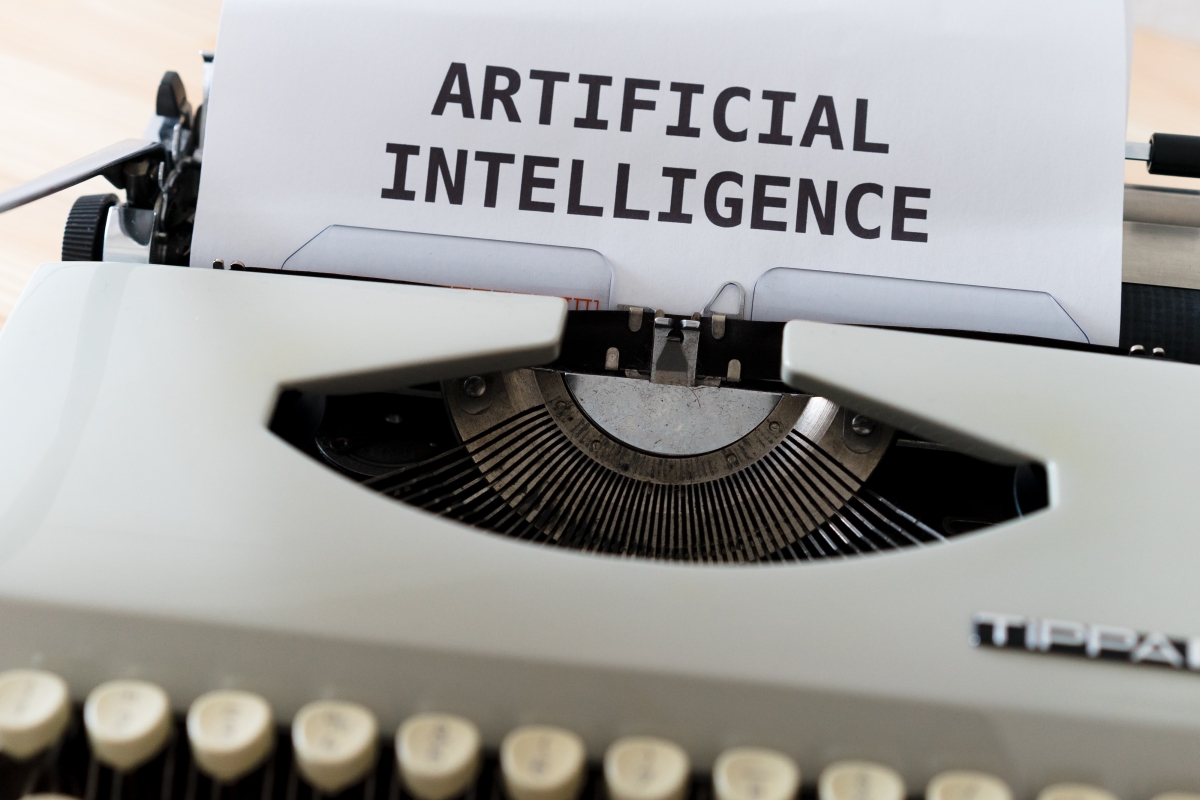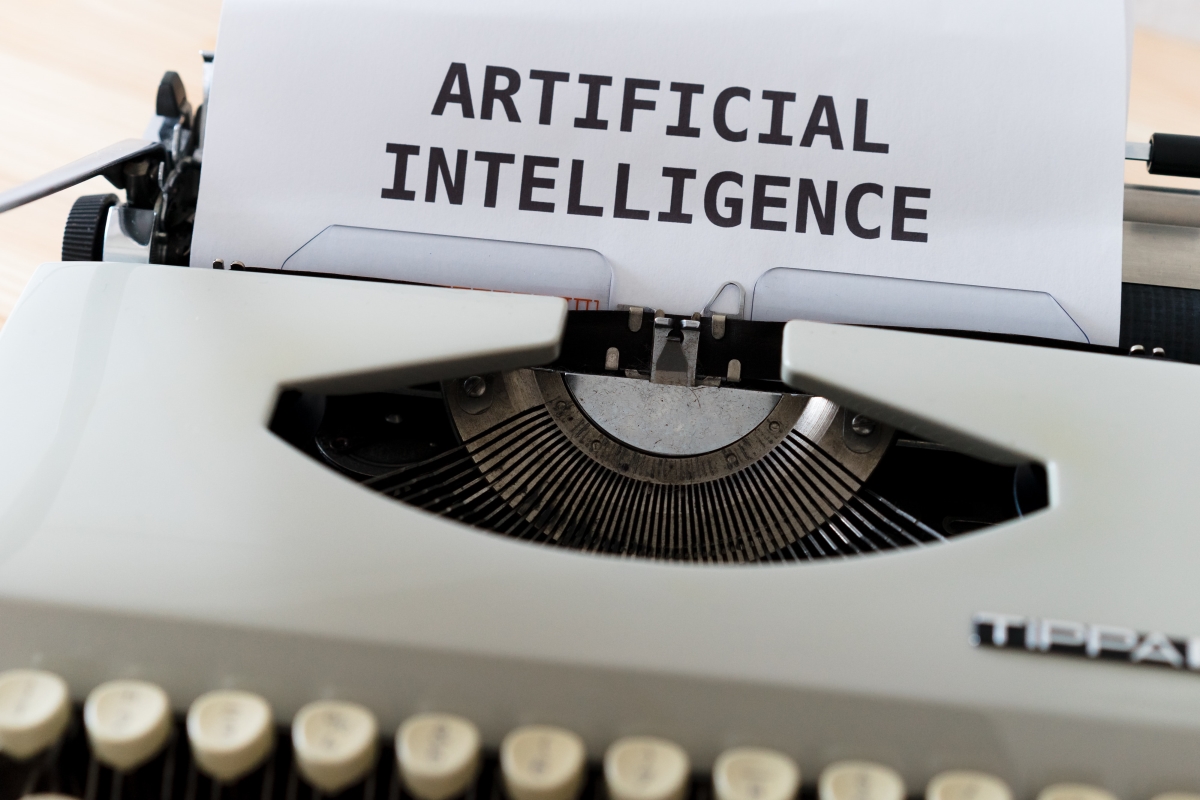How will AI impact the future of graphic design jobs? This question is no longer a futuristic fantasy; it’s a present-day reality shaping the landscape of the creative industry. The rise of AI-powered design tools is prompting a crucial conversation about automation, creative augmentation, and the evolving roles of graphic designers. Will AI replace human designers, or will it empower them to reach new heights of creativity and efficiency?
This exploration delves into the multifaceted impact of artificial intelligence on the graphic design profession, examining both the challenges and opportunities it presents.
From automating repetitive tasks to generating unique design concepts, AI is rapidly transforming how graphic design work is done. This shift necessitates a reevaluation of required skill sets, client relationships, and the very definition of creative work. We’ll investigate how designers can adapt, leverage AI’s capabilities, and maintain their competitive edge in this evolving environment, while also addressing the ethical considerations inherent in this technological advancement.
AI Tools and Their Capabilities in Graphic Design

The integration of artificial intelligence (AI) is rapidly transforming the graphic design landscape. AI-powered tools are no longer just futuristic concepts; they are actively reshaping workflows, augmenting creative processes, and impacting the roles of graphic designers. This section explores the current capabilities of these tools, their automation potential, and their contribution to generating innovative designs.
Current Capabilities of AI-Powered Graphic Design Tools
Several AI-powered tools are currently available, offering a range of functionalities to assist graphic designers. These tools leverage machine learning algorithms to analyze images, understand design principles, and generate various design elements. For example, Adobe Sensei, integrated into Adobe Creative Cloud applications like Photoshop and Illustrator, provides features such as content-aware fill, auto-recolor, and object selection, significantly speeding up tasks.
Other standalone applications, such as Designs.ai and Looka, offer automated logo generation, social media graphic creation, and website design assistance. These tools vary in their capabilities, ranging from basic automation of repetitive tasks to more sophisticated creative assistance. They typically utilize a combination of techniques including generative adversarial networks (GANs) for image generation, convolutional neural networks (CNNs) for image analysis, and recurrent neural networks (RNNs) for sequence generation, allowing them to produce high-quality results across various design applications.
AI-Driven Automation of Repetitive Tasks
AI tools significantly automate repetitive tasks, freeing up designers to focus on more creative and strategic aspects of their work. This automation leads to increased efficiency and productivity. The following table highlights examples:
| Tool Name | Task Automated | Efficiency Gain | Potential Drawbacks |
|---|---|---|---|
| Adobe Photoshop (with Sensei) | Background removal, object selection, image upscaling | Significant time savings; allows for faster image editing and manipulation. | Potential for inaccuracies in complex images; requires user oversight. |
| Designs.ai | Logo generation, social media graphic creation | Rapid prototyping and iteration; reduced design time for standard graphics. | Limited customization options; may require further refinement by a designer. |
| Looka | Logo design, brand guideline creation | Streamlined branding process; efficient creation of initial branding assets. | May lack unique creative flair; potential for similar designs among users. |
Creative Potential of AI Tools in Generating Unique Designs
Beyond automating tasks, AI tools possess significant creative potential. They can generate unique design concepts and variations based on user input, offering fresh perspectives and exploring unconventional design solutions. For example, imagine a designer tasked with creating a marketing campaign for a new sustainable clothing brand. Using an AI tool, the designer could input s like “eco-friendly,” “sustainable fashion,” “natural materials,” and “minimalist design.” The AI could then generate several design concepts incorporating these elements, including variations in color palettes, typography, and imagery.
The designer could then refine and customize these AI-generated concepts, resulting in a campaign that is both innovative and aligned with the brand’s values. This collaborative approach allows designers to leverage AI’s ability to explore a vast design space, while retaining creative control and ensuring the final product reflects their artistic vision and brand requirements. The AI acts as a powerful brainstorming partner, suggesting unexpected combinations and styles that a human designer might not have considered.
Impact on Designer Roles and Skillsets
The rise of AI in graphic design presents a complex picture, simultaneously offering opportunities and posing challenges to designers at all levels. While concerns about job displacement are valid, the reality is likely to be more nuanced, involving a shift in roles and required skillsets rather than outright replacement. The impact will vary significantly depending on the designer’s experience and specialization.AI’s automation capabilities are most readily applied to repetitive tasks, such as image resizing, basic logo variations, and simple layout adjustments.
This will likely impact junior designers more directly, as their roles often involve these routine tasks. Senior designers, however, are less susceptible to immediate displacement, as their expertise lies in strategic thinking, creative direction, and client management – areas where AI currently lacks the sophistication to effectively compete.
Impact on Junior and Senior Designers
Junior graphic designers, often responsible for executing pre-defined designs or performing repetitive tasks, face the most significant potential disruption. AI can automate many of their core responsibilities, leading to increased competition for entry-level positions. Conversely, senior designers, who possess advanced skills in creative problem-solving, client interaction, and project management, are less vulnerable. Their roles focus on high-level strategic decisions and complex design challenges that require human intuition and experience, areas where AI currently falls short.
For example, a senior designer might leverage AI to quickly generate multiple logo variations, but their expertise would be crucial in selecting the best option, refining its aesthetic, and ensuring it aligns with the client’s brand identity. This demonstrates a shift towards collaboration, not replacement.
Essential New Skills for Graphic Designers, How will AI impact the future of graphic design jobs?
To thrive in the AI-integrated design landscape, graphic designers need to adapt and acquire new skills. This involves moving beyond purely technical abilities and embracing a more holistic approach to design.The ability to effectively utilize and manage AI design tools is paramount. This involves understanding the capabilities and limitations of different AI platforms, effectively prompting the AI for desired results, and critically evaluating the output.
Further, strong critical thinking and problem-solving skills will become increasingly vital. Designers will need to be able to identify when AI-generated content requires refinement or human intervention, and to creatively overcome any limitations of the technology. Finally, proficiency in project management and client communication remains crucial. The ability to effectively manage complex design projects, understand client needs, and present design solutions effectively are skills that are not easily automated.These skills can be acquired through various means.
Online courses, workshops, and certifications focused on AI design tools and methodologies are readily available. Networking with other designers, attending industry events, and staying updated on the latest AI advancements are also essential for continuous learning and professional development.
AI as a Creative Augmentation Tool
Rather than replacing human creativity, AI tools can significantly augment it, acting as powerful collaborators in the design process. For example, AI can generate a wide range of design options based on specific prompts, allowing designers to explore diverse possibilities and refine their initial concepts more efficiently. A designer might use an AI tool to generate multiple variations of a website layout, then select the most promising options to refine and perfect based on their artistic vision and client feedback.
Similarly, AI can assist with tasks like image retouching, color correction, and typography optimization, freeing up designers to focus on higher-level creative decisions. This collaborative workflow allows designers to work more efficiently and explore a wider range of creative possibilities, leading to more innovative and impactful designs. The key is to view AI not as a replacement, but as a powerful tool that enhances and accelerates the design process, allowing designers to focus on the aspects of their work that require uniquely human skills.
The Future of Design Work and Client Relations: How Will AI Impact The Future Of Graphic Design Jobs?

AI’s integration into graphic design will fundamentally reshape the client-designer relationship, streamlining communication and altering the project lifecycle. The traditional back-and-forth of revisions will be accelerated, and new avenues for collaboration will emerge, potentially altering the very nature of creative direction.AI will significantly influence how clients interact with designers and how design projects are managed. Faster turnaround times, automated feedback loops, and more precise project estimations are all within reach, promising greater efficiency and potentially lower costs for clients.
Conversely, designers will need to adapt to these changes and leverage AI tools to enhance their creative output and client management skills.
AI’s Role in Communication and Feedback
AI-powered tools can automate many aspects of client communication, such as scheduling meetings, sending project updates, and managing revisions. Imagine a system where clients can upload initial design briefs and receive automated suggestions for style, color palettes, and typography, based on their input and existing design trends. Then, AI could analyze client feedback on initial designs, identifying key concerns and translating them into actionable instructions for the designer.
This translates to reduced misunderstandings and a faster iterative design process. For instance, a client might comment “the logo feels too corporate,” and AI could suggest specific adjustments such as softening the font or using a warmer color palette, presenting the designer with multiple visual options. This speeds up the feedback loop significantly, potentially reducing the number of rounds of revisions needed.
AI’s Impact on Pricing and Project Management
AI can revolutionize how graphic design services are priced and managed. Instead of hourly rates, designers could offer packages based on project complexity and AI-assisted features. A hypothetical pricing model could include a base price for design concepts, an additional fee for AI-powered enhancements (e.g., automated image generation, logo variations), and a premium for personalized design refinements guided by client feedback.
For example, a logo design package could start at $500 for a basic design, $750 for a package including five AI-generated logo variations, and $1000 for a fully customized logo with unlimited revisions. Project management can also be streamlined with AI, automatically tracking progress, deadlines, and resource allocation, providing clients with transparent updates and facilitating more efficient workflow.
This increased transparency and predictability fosters trust and minimizes potential disputes.
Ethical Considerations of AI in Graphic Design
The use of AI in graphic design raises crucial ethical questions, particularly concerning intellectual property and originality. Careful consideration is needed to ensure fair use and avoid infringement.
- Copyright and Ownership: Determining the ownership of AI-generated designs is a complex legal issue. Who owns the copyright – the designer, the client, or the AI developer? Clear guidelines and legal frameworks are needed to address this ambiguity.
- Originality and Authenticity: Over-reliance on AI tools could lead to a homogenization of design styles, potentially diminishing originality and artistic expression. Designers need to strike a balance between leveraging AI’s capabilities and maintaining their unique creative voice.
- Transparency and Disclosure: Clients should be informed when AI tools are used in the design process. Transparency builds trust and avoids potential accusations of deception or misrepresentation.
- Bias and Discrimination: AI algorithms are trained on existing datasets, which may contain biases that could inadvertently influence design outcomes. Designers must be vigilant in identifying and mitigating these biases to ensure fair and equitable representation.
Specific Applications and Industry Trends
AI’s influence on graphic design is rapidly evolving, impacting various design specializations and prompting significant shifts in industry practices. Its application extends beyond simple automation, fundamentally altering the creative process and the roles of designers themselves. This section will explore AI’s impact on specific design areas, emerging trends, and its role in personalized marketing.
AI’s Impact on Logo Design
AI tools are increasingly used in logo design, offering functionalities ranging from initial concept generation to refinement and variation creation. Tools like Looka and Tailor Brands leverage AI algorithms to analyze user input (brand name, industry, preferences) and generate numerous logo options. These tools significantly reduce the time spent on initial brainstorming and allow designers to focus on refining concepts and ensuring brand consistency.
For example, a small business owner can input their brand details and receive dozens of logo variations within minutes, significantly speeding up the branding process. However, human oversight remains crucial to ensure the final logo is aesthetically pleasing, aligns with brand identity, and avoids unintentional similarities to existing logos. AI acts as a powerful tool to accelerate the process, not replace the designer’s creative judgment.
AI’s Impact on Web Design
AI is transforming web design by automating repetitive tasks and offering intelligent design suggestions. Platforms utilize AI to generate website layouts, suggest color palettes based on brand guidelines, and even optimize website content for better user experience. For instance, Wix ADI (Artificial Design Intelligence) automatically generates websites based on user input, offering a quick and easy solution for individuals with limited design skills.
Furthermore, AI-powered tools analyze website traffic data to suggest design improvements that enhance conversion rates and user engagement. This data-driven approach allows designers to create more effective and user-centric websites. While AI handles the technical aspects, the designer’s role shifts towards strategic planning, ensuring brand consistency, and incorporating user feedback for optimal results.
AI’s Impact on Illustration
AI is revolutionizing illustration through tools capable of generating unique and stylized images from text prompts. Platforms like Midjourney and DALL-E 2 allow users to create stunning illustrations with minimal technical expertise. Designers can use these tools to quickly generate a range of illustrative options, explore different styles, and even create variations of existing artwork. This accelerates the creative process and enables exploration of unconventional visual ideas.
However, the role of the human illustrator remains vital for refining the AI-generated images, ensuring consistency in style, and adding intricate details that convey the desired emotional impact. AI acts as a powerful creative partner, enhancing the illustrator’s ability to produce diverse and high-quality artwork.
Emerging Trends in Graphic Design Driven by AI
The integration of AI in graphic design is rapidly evolving, leading to several key trends. A timeline illustrates this progression:
| Year | Trend | Example |
|---|---|---|
| 2018-2020 | Emergence of AI-powered logo and website generators | Looka, Wix ADI |
| 2020-2022 | Increased use of AI for image generation and enhancement | Midjourney, DALL-E 2, Adobe Sensei |
| 2022-Present | AI-driven personalization of marketing materials | Dynamically generated social media ads |
| 2023-Future | AI-assisted design tools with advanced creative capabilities | AI-powered collaborative design platforms |
These trends indicate a continuous shift towards AI-assisted design workflows, where AI handles repetitive tasks and offers intelligent suggestions, allowing designers to focus on higher-level creative and strategic aspects.
AI-Powered Personalization of Marketing Materials
AI enables the creation of highly personalized marketing materials tailored to individual customer preferences and behaviors. For example, AI algorithms can analyze customer data to generate personalized email campaigns with targeted messaging and imagery. Similarly, AI can dynamically generate social media ads with unique visuals and copy based on user demographics and online behavior. Consider an e-commerce company using AI to create personalized product recommendations and promotional offers displayed on a user’s website based on their browsing history and past purchases.
This level of personalization enhances user experience, improves engagement, and boosts conversion rates. The key is leveraging AI to understand the customer and deliver the right message at the right time, maximizing the impact of marketing efforts.
The Role of Human Creativity and Intuition
While AI tools are rapidly transforming graphic design, the uniquely human qualities of creativity, intuition, and emotional intelligence remain crucial and irreplaceable aspects of the design process. These qualities drive innovation, ensure designs resonate emotionally with audiences, and ultimately, determine a design’s success. AI can assist, but it cannot replicate the nuanced understanding and imaginative leaps that characterize human designers.
AI excels at automating repetitive tasks and generating variations based on existing data. However, it lacks the capacity for original thought, the ability to understand complex emotional contexts, and the instinctual grasp of aesthetic principles that are fundamental to impactful design. Human designers bring a subjective understanding of culture, trends, and individual preferences that AI systems currently lack. This difference is significant, particularly when dealing with complex design briefs requiring empathy, originality, and a deep understanding of human psychology.
AI and Human Designer Strengths and Weaknesses in Design Tasks
The following table compares the strengths and weaknesses of AI and human designers across various design tasks:
| AI | Human |
|---|---|
| Strengths: Speed, consistency, automation of repetitive tasks (e.g., resizing images, creating variations), data analysis for trend identification. Weaknesses: Lack of originality, limited emotional intelligence, inability to understand nuanced briefs, potential for bias based on training data. | Strengths: Originality, creativity, emotional intelligence, adaptability to unexpected challenges, ability to understand and respond to complex briefs, critical thinking, problem-solving. Weaknesses: Can be slower than AI, prone to subjective biases, may struggle with consistency across large projects, susceptible to burnout. |
| Strengths: Efficient logo variations generation based on initial concepts, rapid prototyping of different layout options. Weaknesses: Inability to convey brand personality effectively without human guidance, limited ability to adapt to unexpected client feedback. | Strengths: Develops a strong brand identity that resonates with the target audience, effectively communicates the brand’s story and values, adapts to changing client needs and feedback. Weaknesses: Might require more time to complete the project compared to AI, can be affected by personal preferences. |
| Strengths: Quickly generates multiple website layout options based on user input and design principles. Weaknesses: Lacks understanding of user experience beyond basic principles, might produce designs that are visually appealing but lack usability. | Strengths: Creates user-centered designs that prioritize functionality and user experience, ensures the website is accessible and intuitive, adapts the design based on user testing and feedback. Weaknesses: Might be challenged to come up with highly innovative or groundbreaking layouts. |
A Hypothetical Collaborative Project
Consider a project to design a marketing campaign for a new sustainable clothing brand. The campaign needs to appeal to a young, environmentally conscious audience while conveying the brand’s commitment to ethical and sustainable practices. A human designer, skilled in branding and storytelling, would initially develop the core concept and brand identity, focusing on the emotional connection with the target audience.
This includes defining the brand’s voice, values, and visual style. The designer would then use AI tools to rapidly generate variations of logo designs, marketing materials (e.g., social media posts, website banners), and explore different color palettes and typographic choices based on the initial concept.
The AI could analyze vast amounts of data on successful sustainable fashion campaigns to identify trends and best practices. The human designer would then review the AI’s output, selecting the most promising options and refining them based on their creative vision and understanding of the brand’s unique story. This iterative process, involving both human intuition and AI’s efficiency, would result in a highly effective and original marketing campaign that resonates emotionally with the target audience while maintaining consistency in branding.
The final product would be a cohesive and impactful marketing campaign that effectively communicates the brand’s values and appeals to its target audience. The campaign would stand out for its originality and emotional resonance, demonstrating the power of a synergistic human-AI collaboration. The campaign would likely include a series of visually striking social media posts, a user-friendly website, and print materials, all reflecting the brand’s commitment to sustainability and ethical production.
Conclusion

The integration of AI into graphic design isn’t about replacing human creativity; it’s about augmenting it. While AI excels at automating tedious tasks and generating initial design concepts, the human element—intuition, emotional intelligence, and strategic thinking—remains irreplaceable. The future of graphic design lies in a collaborative partnership between human designers and AI tools, where designers leverage technology to enhance their efficiency and explore new creative avenues.
Embracing this collaboration will not only ensure the continued relevance of graphic designers but will also unlock unprecedented levels of innovation and creative output in the years to come. The key is adaptation, upskilling, and a forward-thinking approach to integrating AI into the creative workflow.

